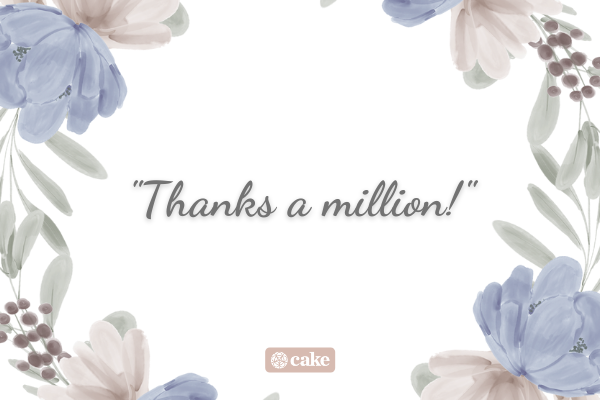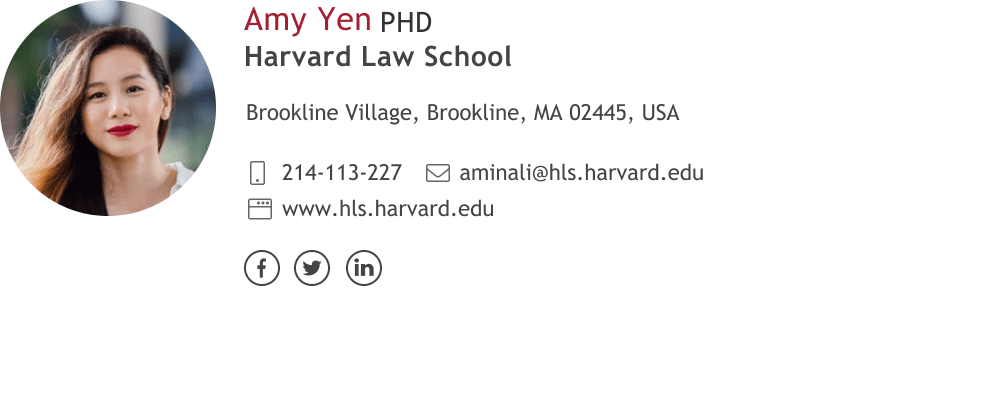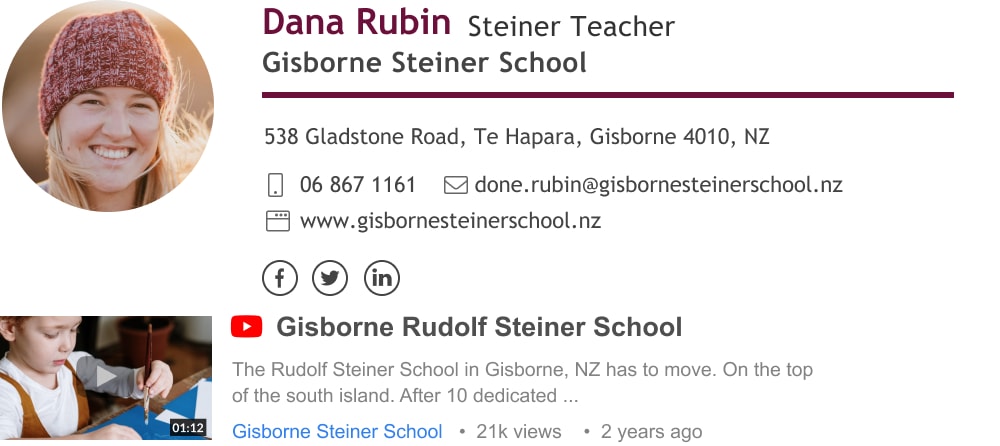Find the right sign-off for the right recipient, on the right occasion. Browse our comprehensive list.
Email sign-offs are a small but meaningful part of communication. Ending your emails with gratitude, care, and thoughtfulness can strengthen relationships and leave the reader with a positive impression But finding fresh and authentic ways to sign off beyond the usual “Thanks” or “Thank you” takes creativity and nuance In this article, we’ll explore creative and professional sign-off alternatives to “thanks” that convey warmth, appreciation, and human connection.
Why Signing Off With Gratitude Matters
Email sign-offs may seem trivial, but they frame the tone of your message and signal how much you value the recipient. An email filled with demands or instructions can come across as rude without a gracious sign-off. Thoughtful sign-offs counterbalance directness and soften requests by bookending messages with goodwill.
Signing off with gratitude also nurtures relationships and reciprocity. When you demonstrate consistent appreciation in your sign-offs, people are more likely to help you again. The extra effort to craft a warm, authentic sign-off shows you don’t take the person for granted.
Creative Alternatives to “Thanks”
There’s nothing wrong with “Thanks” or “Thank you,” but predictable sign-offs can become stale after frequent use. Here are creative alternatives to keep your sign-offs feeling fresh.
1. Express Appreciation for Their Time or Help
A specific expression of gratitude acknowledges the recipient’s effort on your behalf. For example:
-
“Thank you for taking the time to speak with me today.”
-
“I appreciate you sharing your insights on this project.”
-
“Thanks for all your hard work getting this proposal together.”
2. Wish Them Well
Signing off with well-wishes conveys warmth and care beyond business. For example:
-
“Have a wonderful weekend!”
-
“Wishing you a relaxing evening.”
-
“Hope you have a great week ahead.”
3. Include a Compliment
A sincere compliment about their work or assistance makes the sign-off more meaningful. Just keep compliments professional. For example:
-
“I appreciate your patience and crystal clear communication.”
-
“Thanks for all your diligent efforts on this initiative. It’s really impressive.”
4. Reference Future Contact
If you anticipate contacting them again, note your desire to connect in the future. For example:
-
“I look forward to speaking with you again soon.”
-
“Hope we can continue this conversation again next week.”
5. Sign Off With Care
Warm wishes express personalized care beyond a business relationship. For example:
-
“Wishing you joy, peace and continued success.”
-
“Warmly”
-
“With care”
6. Inspire or Uplift
You can brighten someone’s day with an inspirational quote or uplifting sentiment. For example:
-
“Keep shining your light.”
-
“May you be filled with lovingkindness.”
-
“Lead with your heart.”
Professional Sign-Offs That Convey Gratitude
For formal business situations, creative sign-offs may not fit the tone. Here are professional sign-off options that still communicate gratitude:
-
“It was a pleasure connecting with you today. Thank you again for your time.”
-
“Thank you for your prompt response. I appreciate you making this a priority.”
-
“I value our discussion today. Thank you for your insights on moving this forward.”
Respectfully
Using an email sign-off like “respectfully” could help you establish a positive relationship with the reader. It conveys professionalism and gratitude for their time.
Gratefully
“Gratefully” indicates deep appreciation and is more formal than “thanks.” It’s ideal for signaling appreciation after someone has done you an important favor.
Sincerely
A simple “sincerely” communicates earnestness and warmth. Pair it with a specific thanks for a professional yet grateful sign-off.
Regards
“Regards” or “best regards” is a popular and safe option for formal business relationships. Keep it warm by following with a note of thanks.
Cordially
“Cordially” conveys graciousness and warmth. It’s more formal than “best” but implied deep respect.
Get Creative With Your Sign-Offs
Email sign-offs present a chance to express care, appreciation, and strengthen connections. Avoid overused phrases like “thanks” and get creative. Share a compliment, uplifting quote, or wish them well. When gratitude comes from the heart, people feel valued, respected, and inspired to help you again. A thoughtful sign-off reminds people there’s a real human being on the other end of the email who appreciates them.

Sick days email sign-offs
After COVID, we have gotten used to sending SickNot Sick Email sign-offs to our friends, colleagues and customers. following the best examples for sick days email sign-offs.
Keep safe and healthy Hope you and your family are safe and healthy during these unpredictable times Hope you’re making it through this pandemic Stay safe Stay positive Be well! Have a socially distant [day, week] Take care, we’ll get through this Let’s hope for the best Hope things will improve soon
Get well soon Hope you feel better soon Hang in there Be well Take it one day at a time Take it easy Hope you have a quick and easy recovery Wishing you a speedy recovery Our thoughts are with you Our prayers are with you
Formal sign-offs are used for closing an email when communicating with someone in a professional or interest-based setting. Even if you know each other it’s best to remain formal when you are not equal in authority, rank, or social standing.
There are many kinds of formal sign-offs depending on the special circumstances for which they are used. Just click any of the jump links in the list below to get to where you need.
How to sign-off for use in college or university
An academic email sign-off is one of the easiest to pull off. The most commonly placed sign-offs are the most appropriate. The most used sign-offs may very well have been established in the context of academic correspondence in universities, colleges, or research centers.
A student’s sign-off when emailing her professor should be formal and respectful.
A professor’s sign-off when emailing her student should be formal but can establish a softer, warmer connotation.
- All the best
- Best Wishes
- Best regards
- Respectfully
- Regards
- Thank you
- Thank you in advance
To Subject

Student to professor/teacher sign off
- Best regards
- Warm regards
- Kind regards
- All the best
- Best Wishes
- Warm wishes
- Warmly
- Thank you
To Subject

Example of a teacher email sign off
V/R or respectfully are formal email sign-offs used in the military and may also be appropriate for government officials and clergy. These sign-offs are too formal for most email communications. They should be reserved for addressing an authoritative figure in a hierarchical organization or community.
- V/R
- Very respectfully
- Respectfully
- Respectfully yours
To Subject

Military email sign off example
19 Ways To Say Thank You & Show Your Appreciation – Business English
FAQ
What is another way to say with gratitude?
|
grateful
|
thankful
|
|
gratified
|
obligated
|
|
pleased
|
under obligation
|
|
in someone’s debt
|
much obliged
|
|
owing a debt of gratitude
|
owing someone thanks
|
What is email sign-off etiquette?
An email sign-off goes directly after the email’s closing line and signals that the message is complete. Email sign-offs are used in just about every kind of email. They’re a crucial part of business correspondence, and because of this, using an appropriate email sign-off is good email etiquette. Every email sign-off should include the following:
What is a thank you sign off?
This is an upbeat sign off that’s typically used among friends, acquaintances, and colleagues to motivate the recipient or to express gratitude for their support or help. However, the sign off may not be appropriate for professional or formal settings, such as business and job-related emails.
How do you end a cover letter with gratitude?
“With gratitude” This sign-off is a professional way to communicate you’re grateful for your contact’s actions, thoughts, or feedback. 41. “Sincerely” Most professionals end their cover letters with this sign-off. That’s probably the only situation you should be using it for — otherwise, you might sound like you’re trying to be someone’s pen pal.
When should you write a congratulatory email sign off?
Writing “congratulations” at the end of the email is an effective way to celebrate the recipient’s accomplishments. An appropriate setting to use this sign off is after closing a business deal or a successful presentation. 50. You rock A complimentary email sign off that’s more casual than professional.